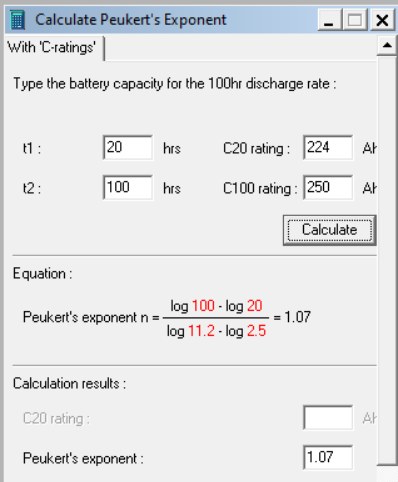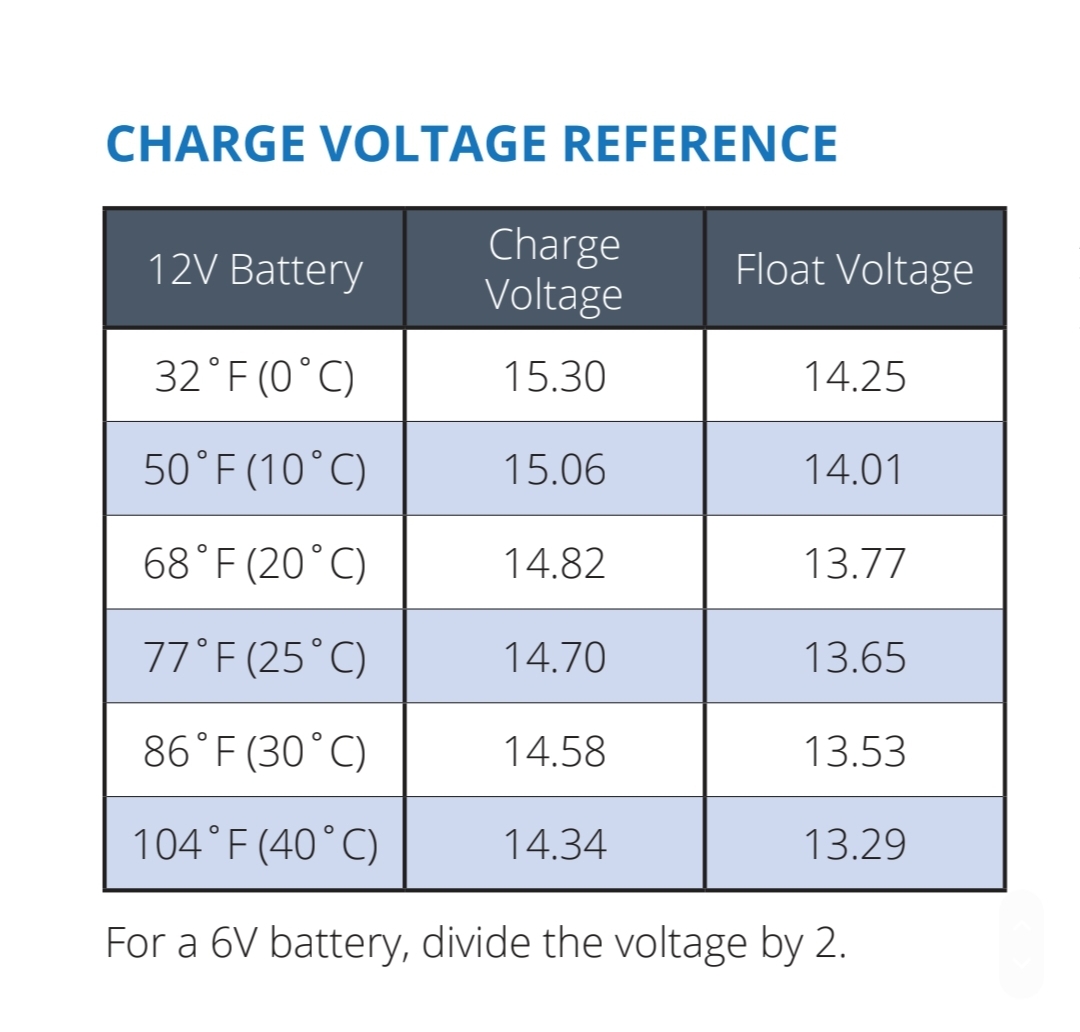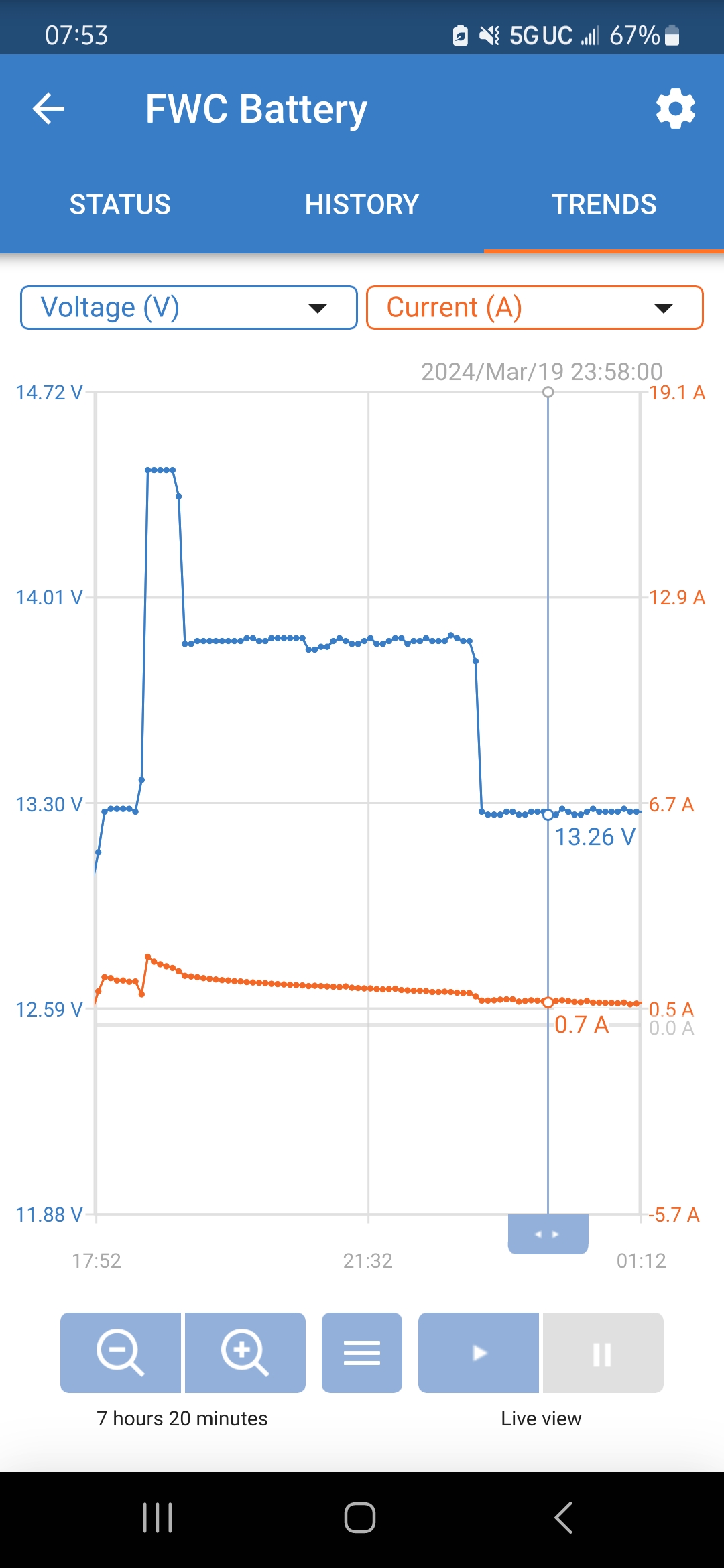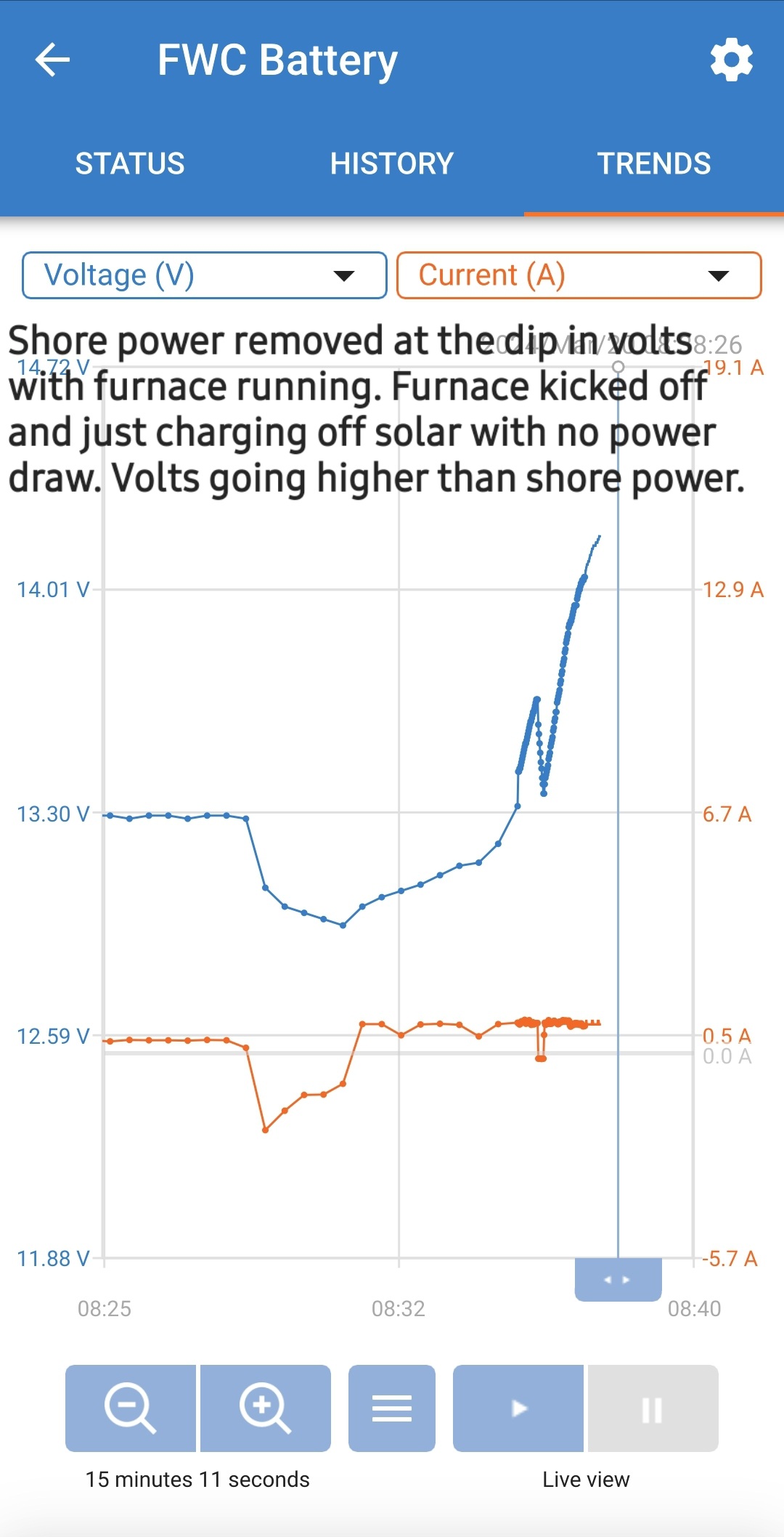
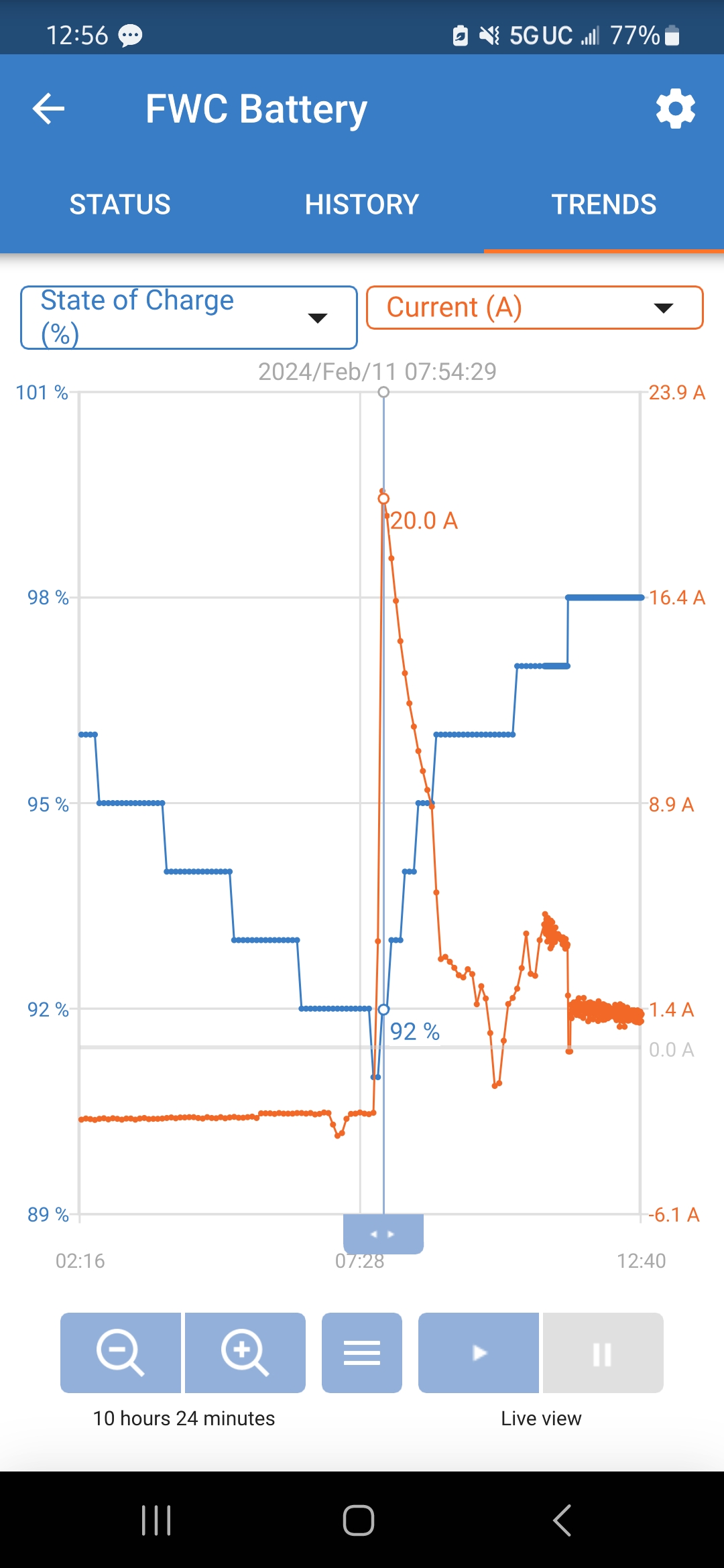
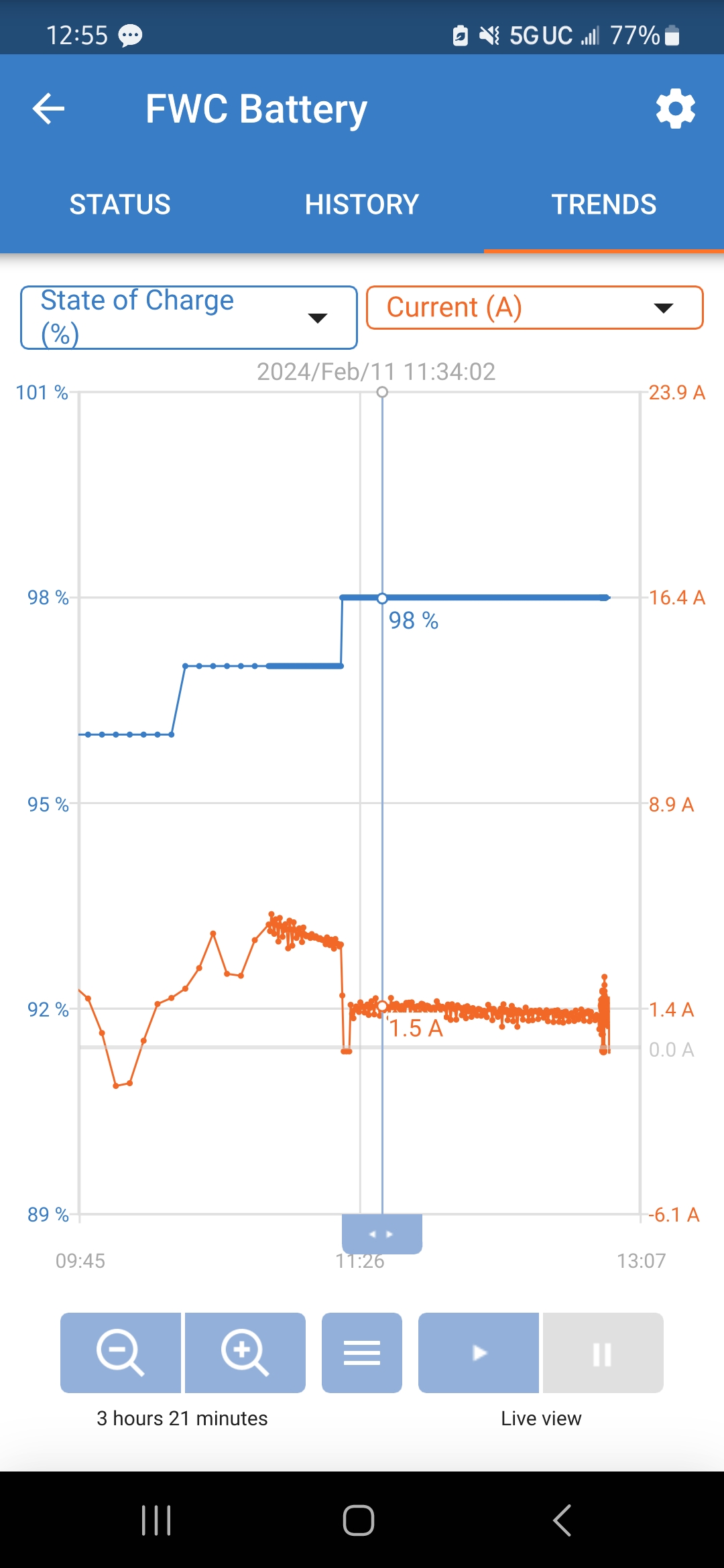
 I have a new Four Wheel Camper with dual 6 volt batteries rated to 224 amps. To charge them I have a RedArc BCDC1225 powered from the alternator, 180 watts of solar, and of course shore power.
I have a new Four Wheel Camper with dual 6 volt batteries rated to 224 amps. To charge them I have a RedArc BCDC1225 powered from the alternator, 180 watts of solar, and of course shore power.
I honestly have no clue what I'm looking at even after reading the manuals several times. I've included some screenshots of the settings and the most recent few hours and day of charging to hopefully give more context. Charge efficiency, peukert exponent, and tail current are all foreign to me. Below is our normal usage.
At night we run the furnace and some floor LEDs. The furnace pulls 2.5 amps, and in Colorado in winter it essentially runs constantly all night. The LEDs are negligible power, but in a 10 hour night we'll see around 25 amps used. Knowing that 50% of the total amps is usable, is 25 amps per night a huge draw on the battery? In the morning the battery percentage shows about 91%, but I'm not so sure of that's accurate with my settings. And with this, the low voltage alarm set to 50% goes off every night, but that's with the draw of the furnace on it.
With the RedArc, it can charge at a max of 25 amps, but with an AGM battery it's not all going in. I have the efficiency setting at 85%. I would expect the truck to give it nearly all that, but it seems to top around 20 amps only for a very short period of time then quickly tapers off and hovers around 4-8 amps. Next you can see the solar seems to get around 4-5 amps, but again it's only for a short period of time even with direct sunlight at noon and quickly stabilizes around 1-1.5 amps. The RedArc shows it's at a float charge which would seem to make sense with all of this, but I find it hard to believe I'm depleting only 9% or so at night then it can bulk charge to about 97% in 30 minutes off the alternator.
New to the forum, so thank you in advance for all the help. I'll surely do what I can to help answer questions as they come up and have a confident answer.

